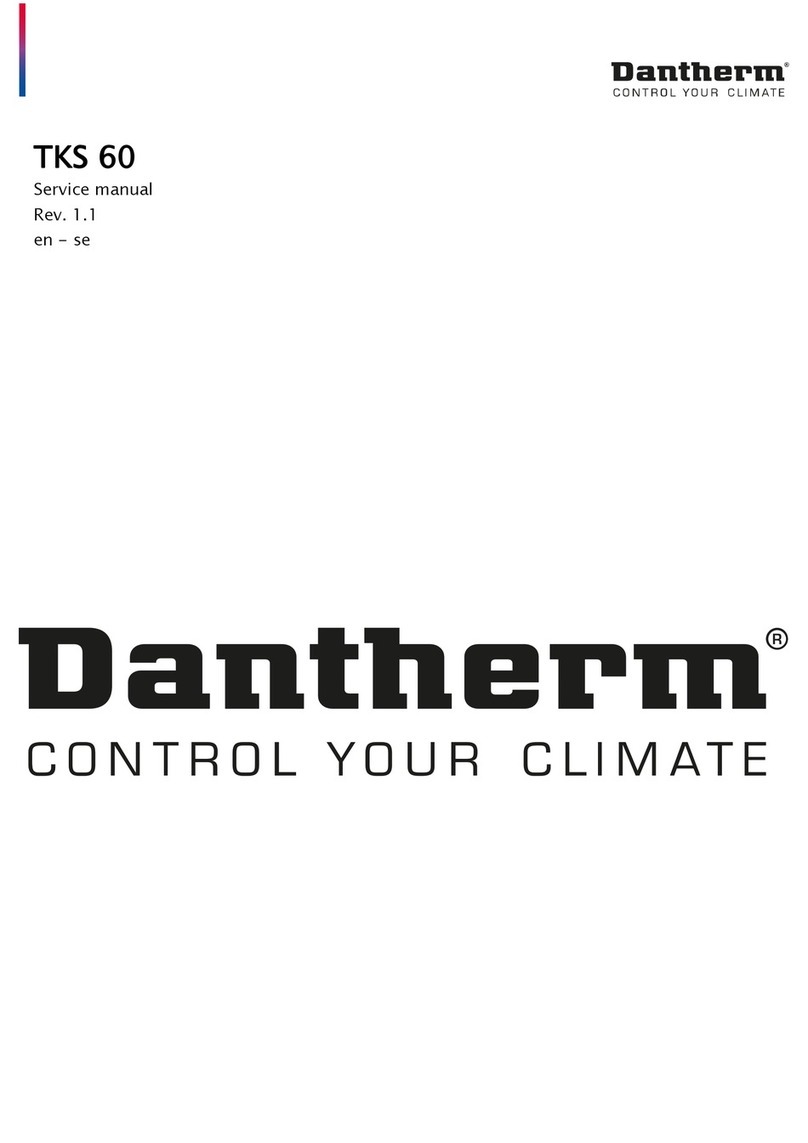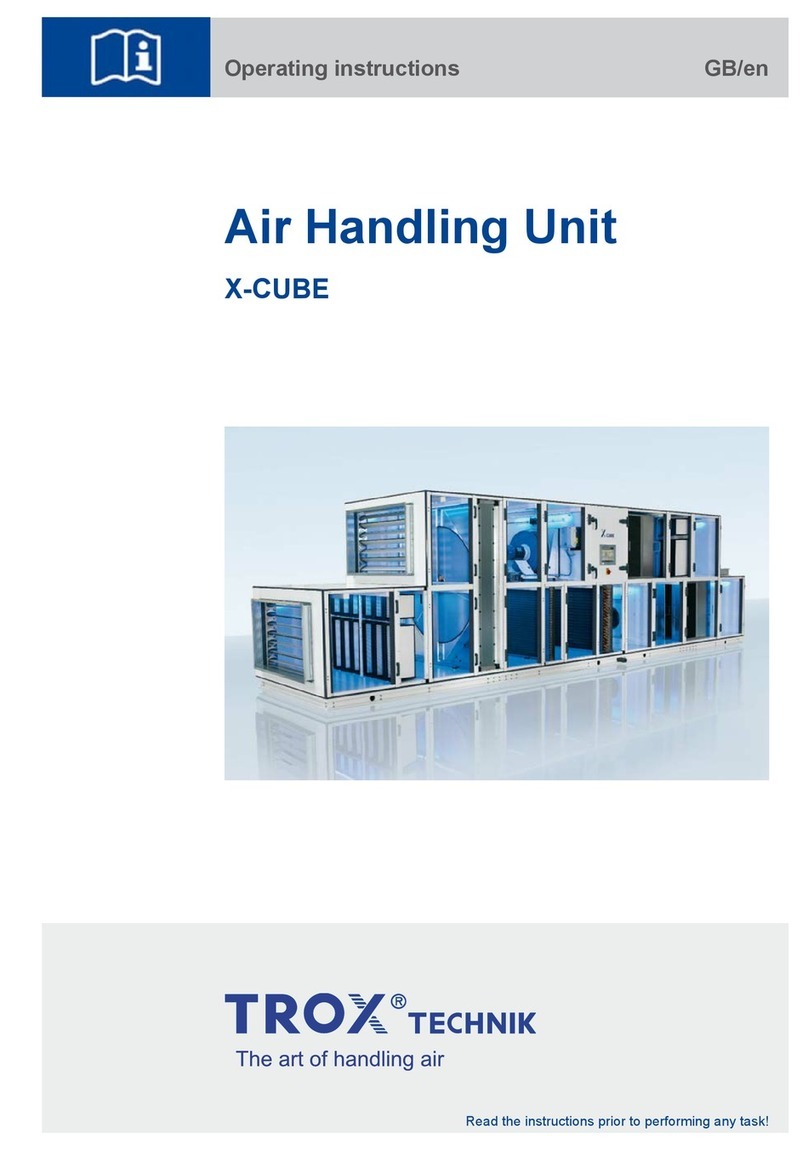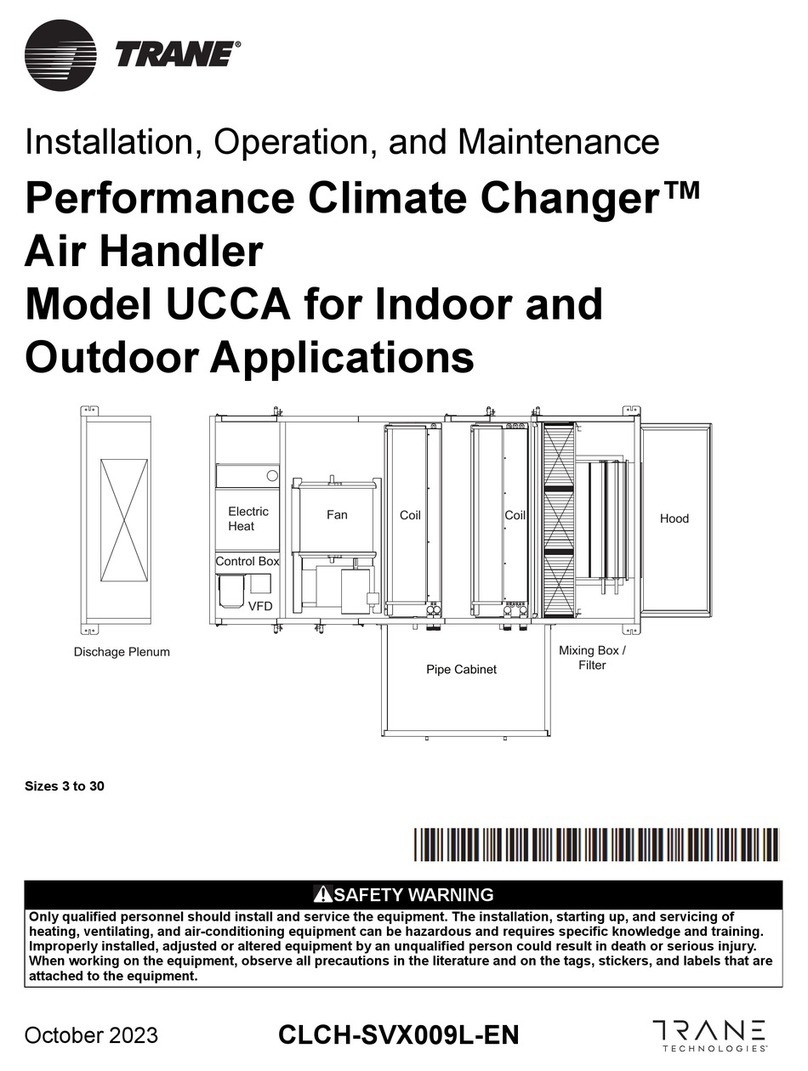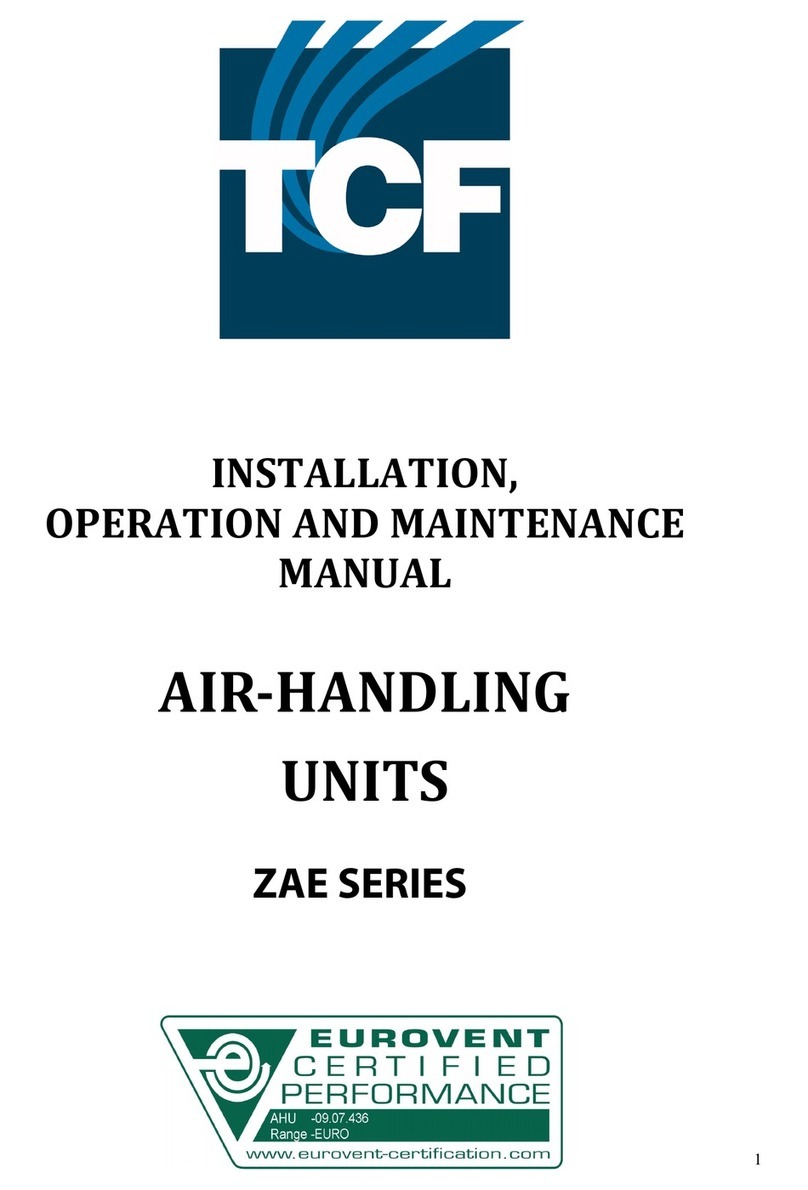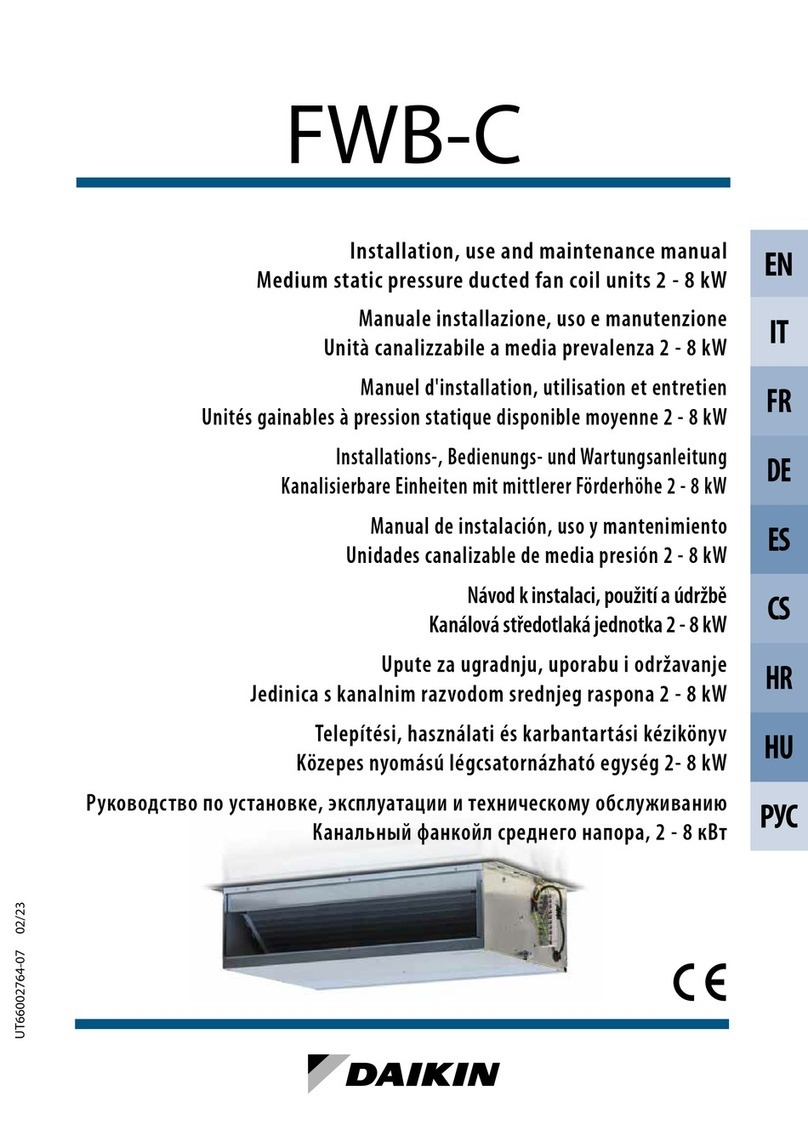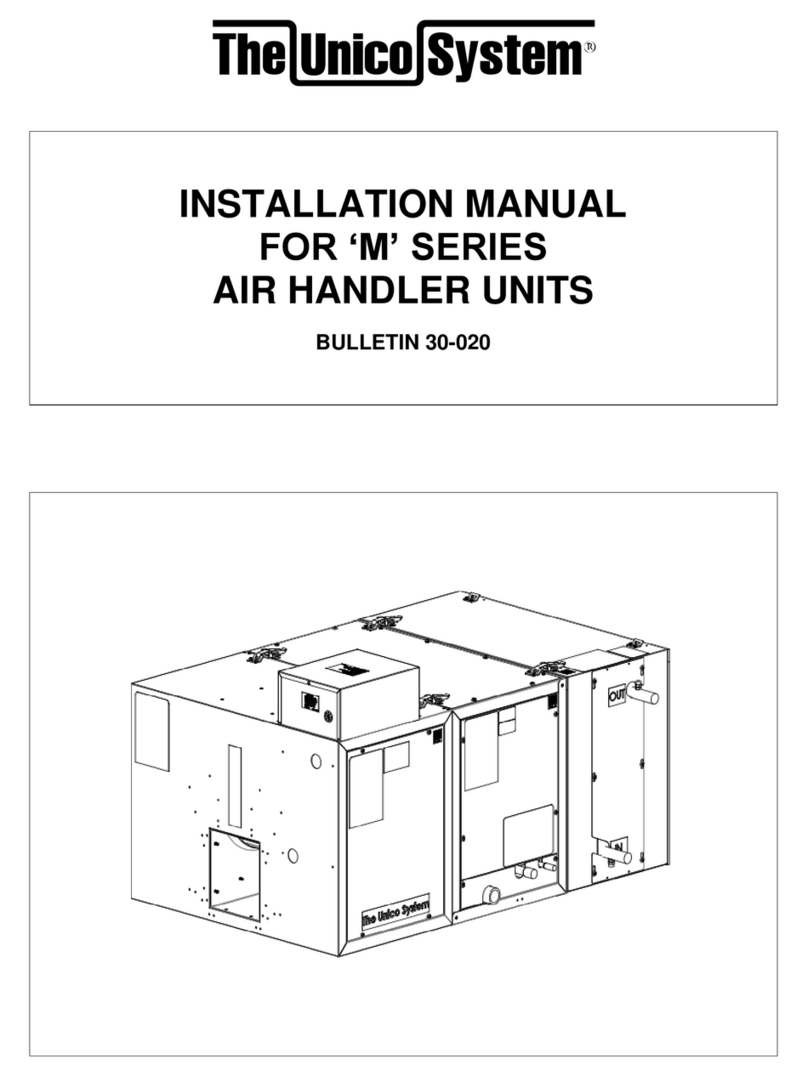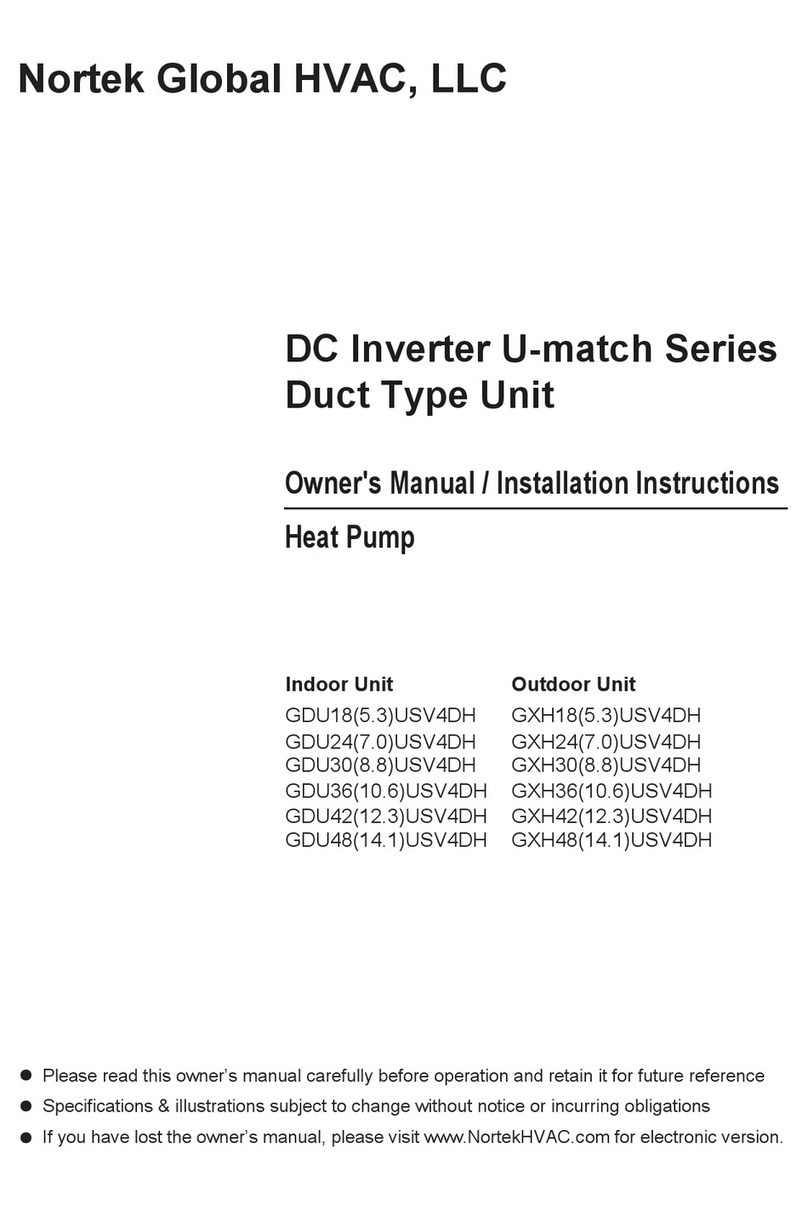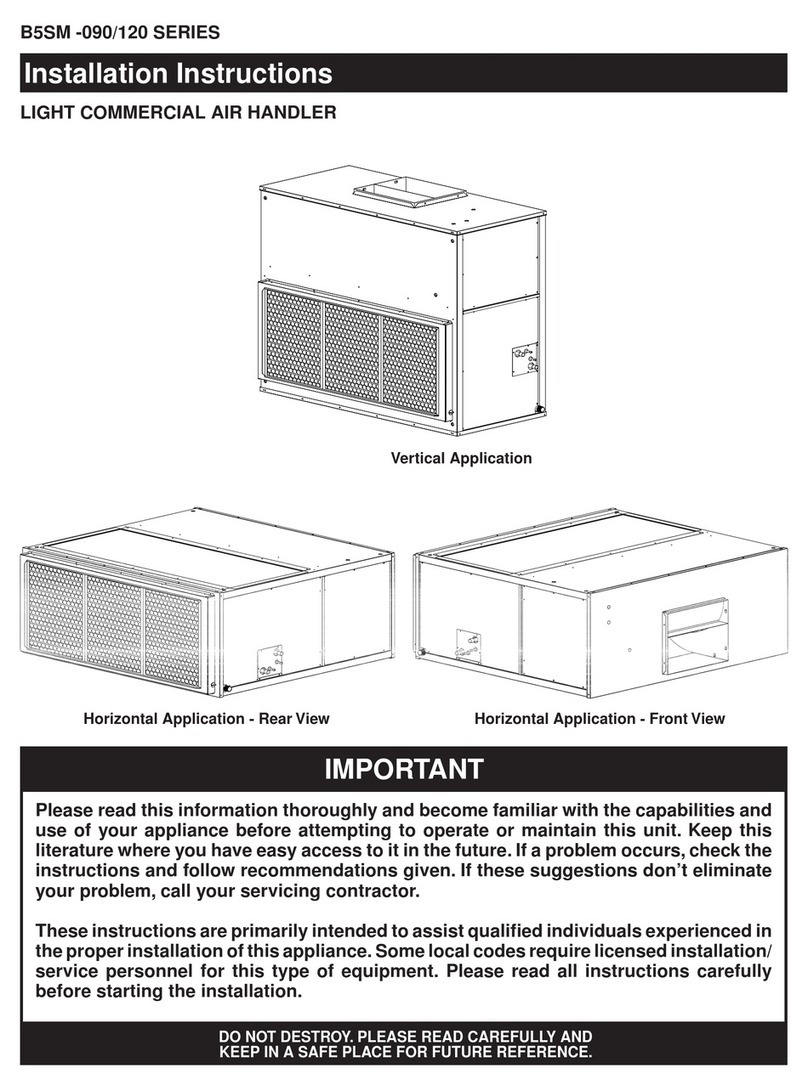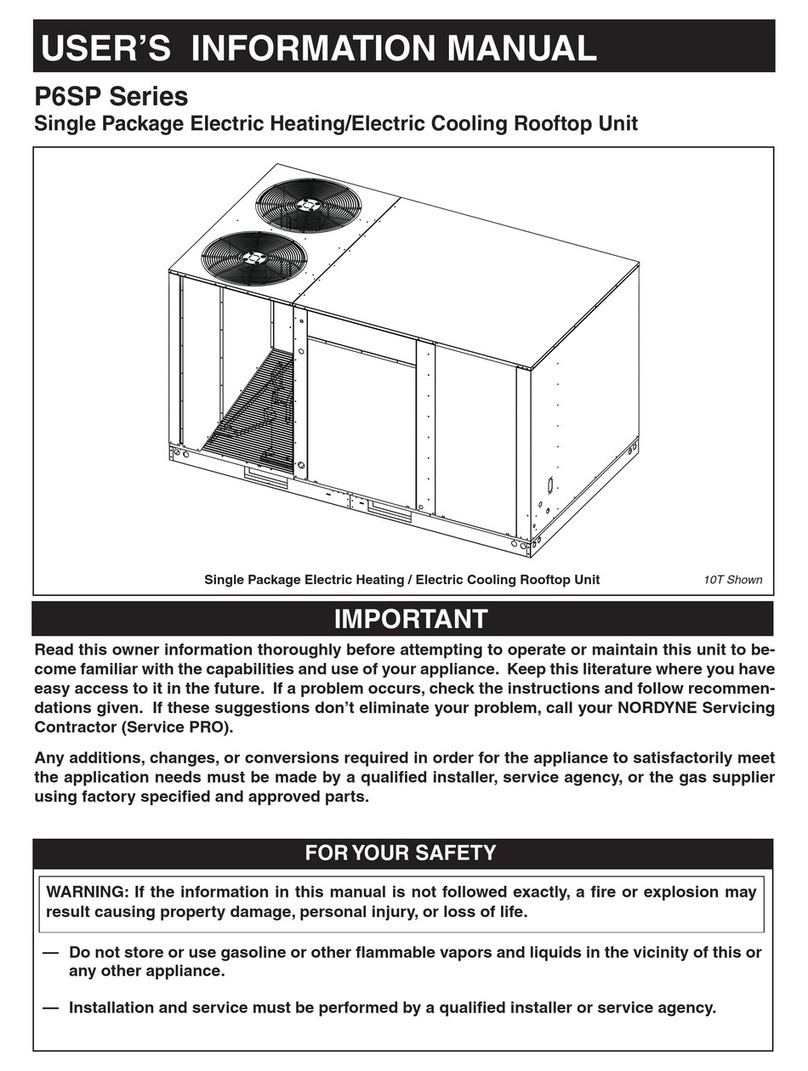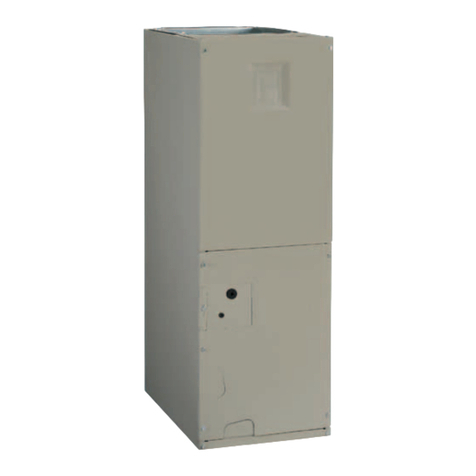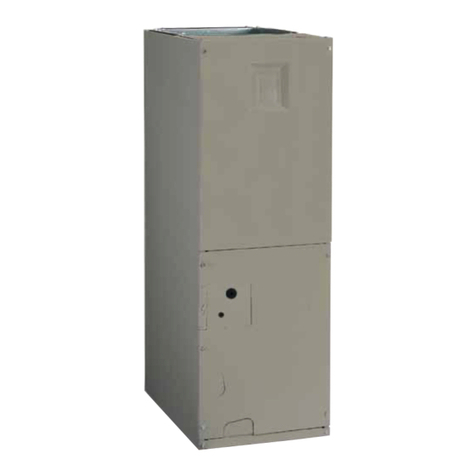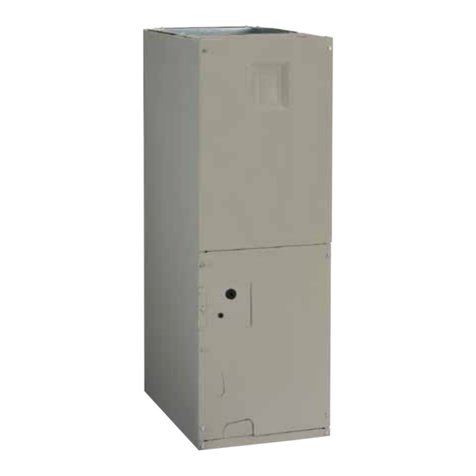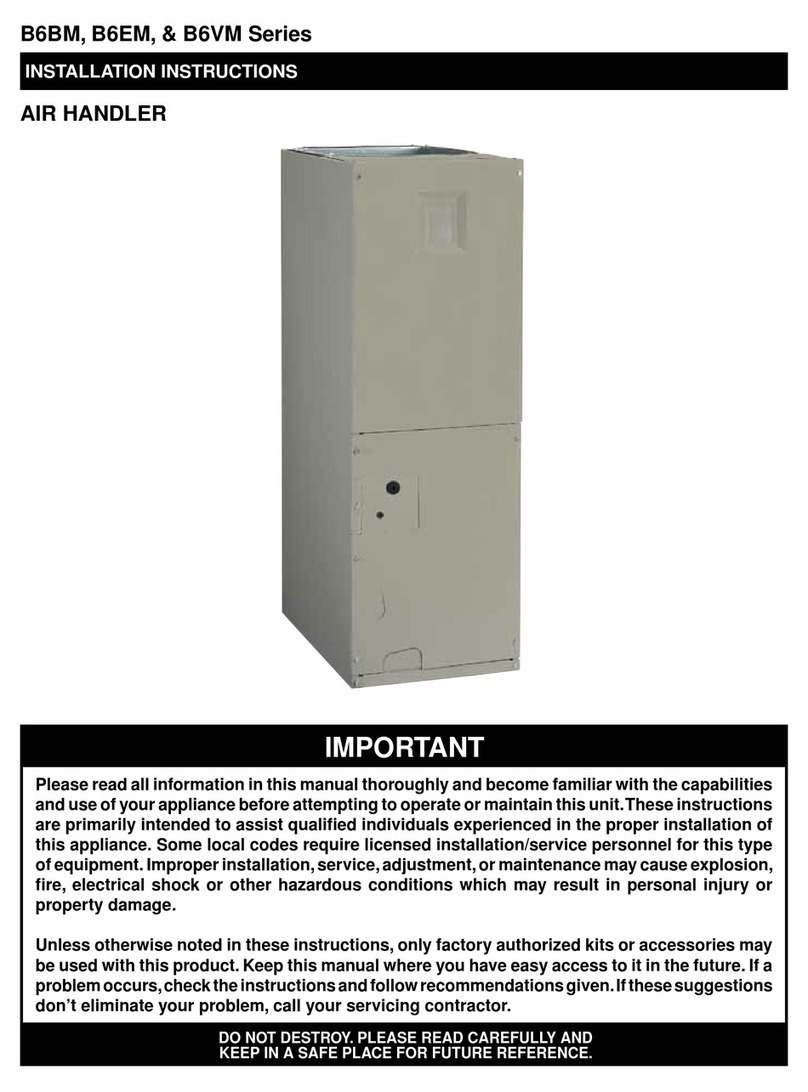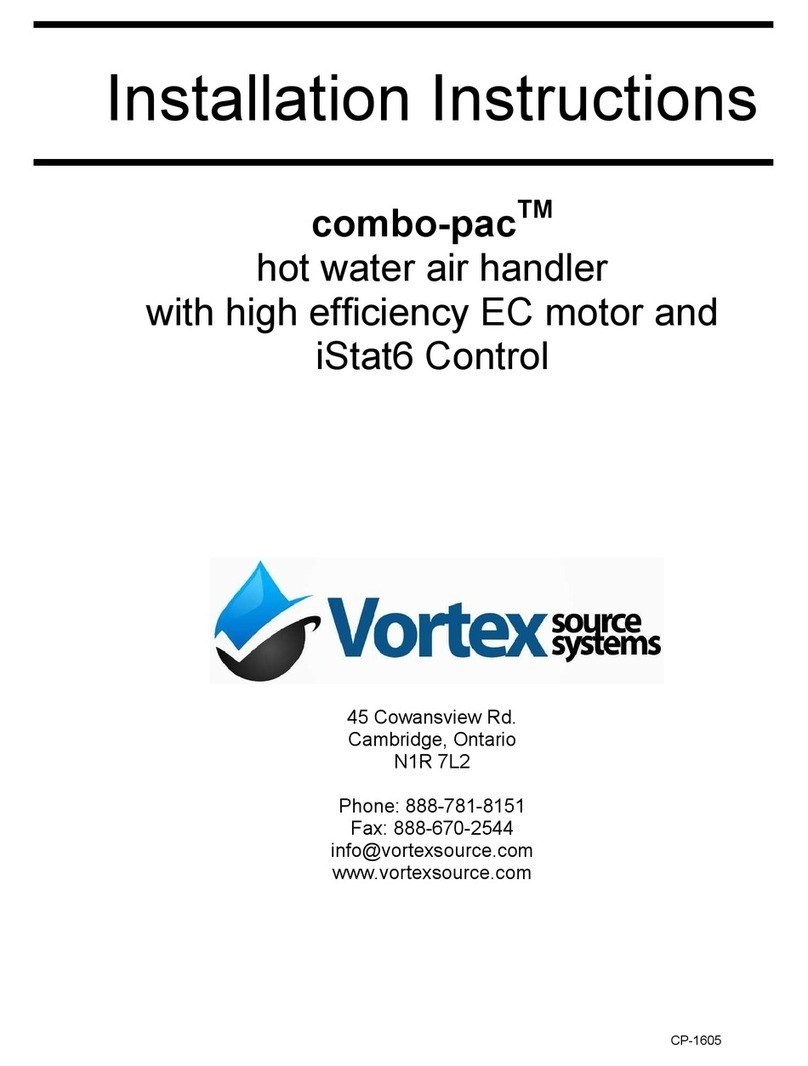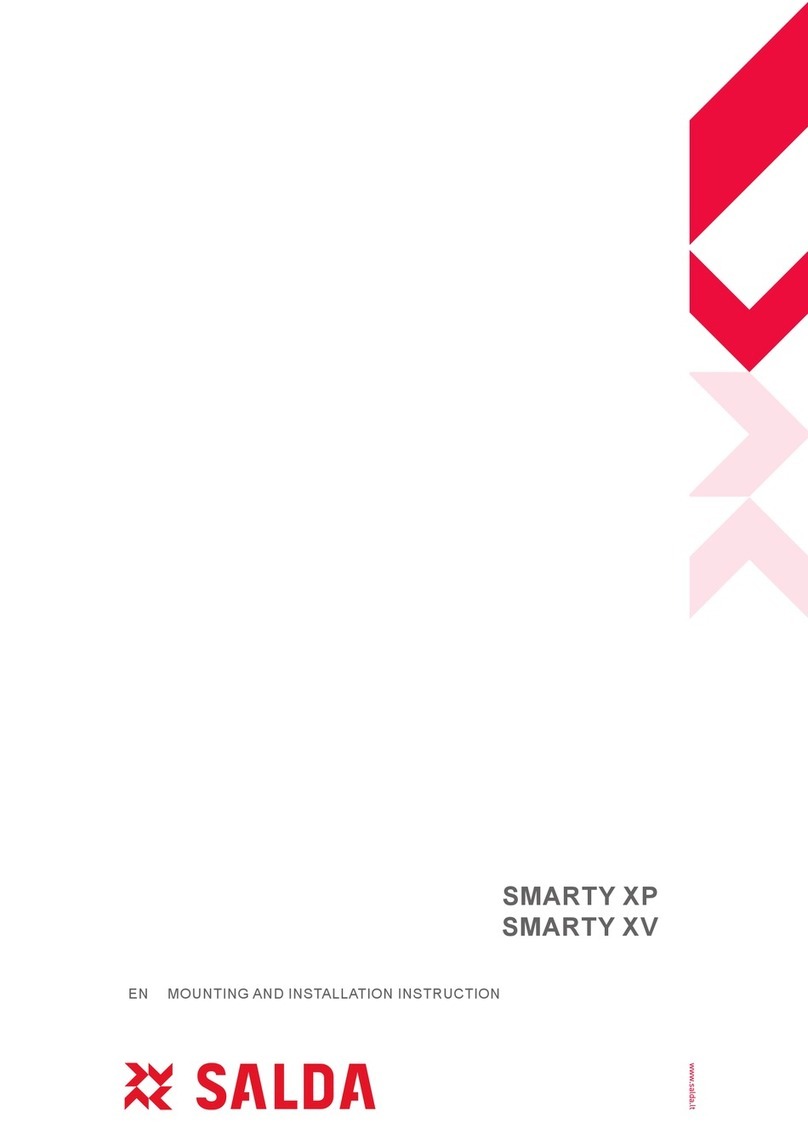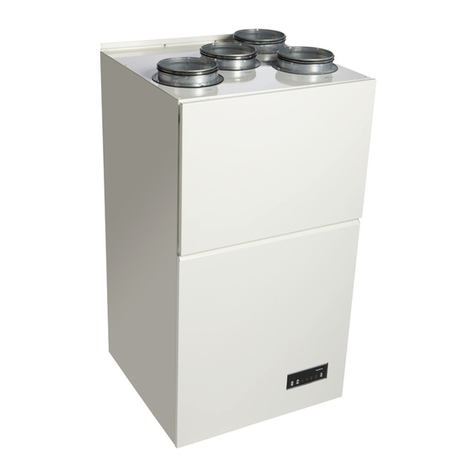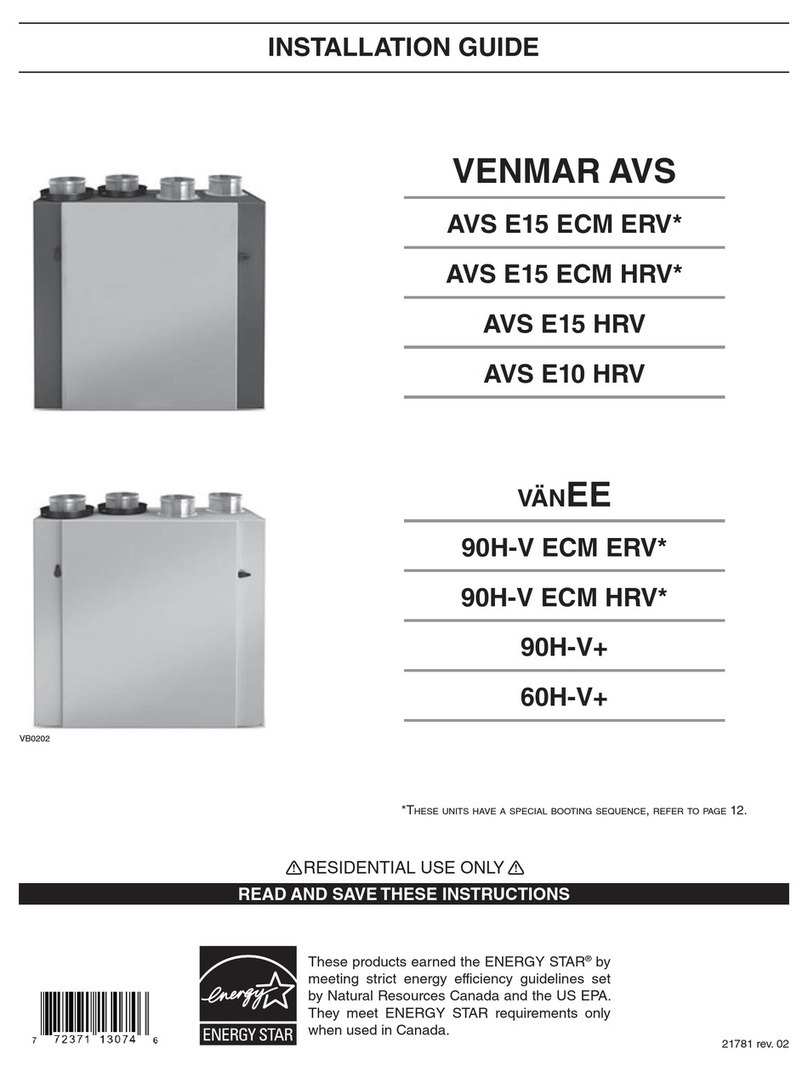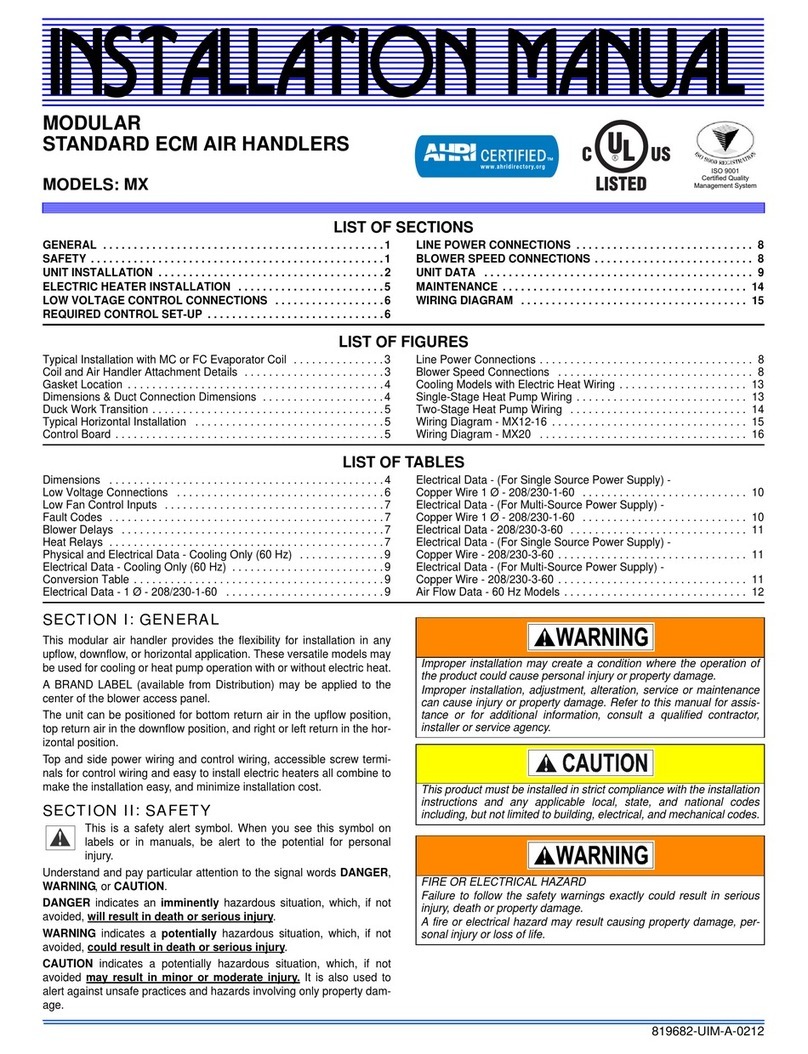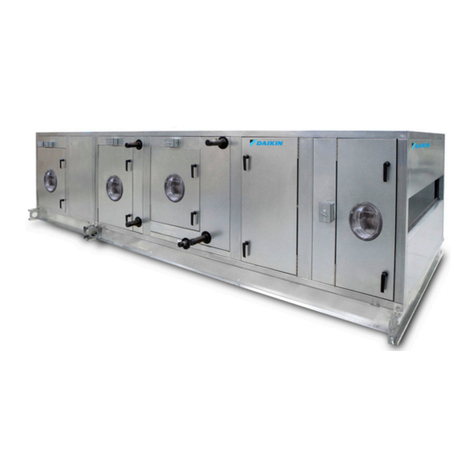
12
3.Connect the heating speed wire (red) and the cooling
speedwire(black) to the desired blower speed marked
on the terminal block of the blower motor.
• Terminal4=Hispeed
• Terminal5=Medspeed
• Terminal6=Lowspeed
4.Replace the upper door and secure it to the unit.
5.Restore power to the unit.
High Efficiency Units (Variable & Fixed Speed)
IMPORTANT! This air handler has been designed to
give the installer maximum flexibility to optimize system
performance,efficiency,andcomfort.Becausethereareso
manydifferentwaystosetuptheairhandleritisimportant
to read and follow these directions carefully.
B7EM&B7VMairhandlersusehighefficiencycirculating
air motors that come in two variations and both are
controlleddifferently.Thefixedspeedmotorcontrolboard
(Figure 12, page 23) controls the torque and the variable
speedmotorcontrolboard(Figure13)controlstheairflowat
aconstantCFM.Bothboardsusethesamecontrolboard.
Before operation, the air handler must be configured to
matchtheunitwiththesystem,systemoptions,andclimatic
conditions. When configured, the air handler responds
directly to the thermostat inputs, as well as the optional
humidistat (see page 12). During normal operation, the
motor will gradually change speeds during start-up, shut
down,whenthermostatinputschange,andwhentheduct
static pressure changes (vents closed or opened, filter
clogging, etc.). The air handler is configured by setting
the selector switches and removing jumper connectors.
Selecting Basic Heating Airflow
Fixed & variable speed motor control boards (Figures 12
& 13) contain a set of dip switches for setting the blower
speed. For MB7EM models, pins 1-4 set the speed for
heating.ForMB7VMmodels,theA/Bswitchmustbesetfor
theappropriatecabinetsize(eithersettingcanbeusedfor
C-sizecabinets).Theairflowissetautomaticallybasedon
the amount of installed heat.For bothMB7EM & MB7VM
models,thecoolingspeedisselectedviaswitches5,6,7,&
8. To determine the appropriate switch settings for your
installation, see Tables 5 - 8 (pages 17-19).
Selecting Basic Cooling / Heat Pump Airflow
Thebasiccooling/heat-pumpairflowiscontrolledbysetting
switches5-8onthemotorcontrolboard(mountedonthe
blower).All airflows for other modes of operation (except
electric heat) are determined by this basic setting. FAN
ONLY would deliver 50% of the selected cooling airflow.
Table 5 lists the basic airflow values versus the airflow
selector switch settings and ranges of basic air flow
settingsrecommendedforeachnominalsystemcapacity.
• When operating in the heat pump mode, a higher basic
airflow setting will increase the energy efficiency and
capacitybutwillalsodecreasethesupplyairtemperature.
• Formaximumcapacityandenergyefficiency, select an
airflow at or near the top of the range for that nominal
capacity. See Table 7 (page 18).
• Formaximumdehumidification,selectanairflownearthe
middle or bottom of the range for that nominal capacity.
Additionalinformationonhumiditycontrolcan befound
in the Humidistat and Delay Setting sections.
• For thermostats with a dehumidifier output, use a field
supplied wire to connect the thermostat’s dehumidifier
output to the terminal marked DHUM.The thermostat
should be set so that the DHUM output should be high
(energized)whendehumidificationisneeded.Seealso
Dehumidification Options section.
IMPORTANT! If coil icing is observed, the basic cooling/
heat-pump airflow selected may be too low. Verify the
setting selected is within the range shown inTable 7 and
thatthethesystemisproperlycharged.Pleaserefertothe
instructionssuppliedwiththeoutdoorunit.Ificingcontinues
to occur, raise the selected airflow one or two steps.
NOTE: Variable speed air handlers with SEER ratings
higherthan15arematchedwitha2-stagecoolingoutdoor
unit. They are programmed to operate at 75% of the
selected airflow while the system is in the lo-cool mode
and 100% of the selected airflow while in hi-cool mode.
Dehumidification Options
(B7EM or B7VM Models Only)
Both motor control boards (Figures 12 & 13, page 23)
have a DHUM connection that allows the system to
increase the amount of humidity that is removed from
the circulating air.This is accomplished by reducing the
CFM and allowing the cooling coil to become colder.This
will only occur when there is a call for cooling.There are
many ways that this can be electrically wired.
1.If the room thermostat incorporates a humidity sensor
andDHUMoutput,connecttheDHUMonthethermostat
to the DHUM terminal on the motor control board.
2.If using a separate humidistat, connect the DHUM & R
terminals on the humidistat to the DHUM & Rterminals
on the motor control board of the air handler. In this
option, the DHUM output of the humidistat must be set
to be normally open and closed when there is a call for
humidification. See Figure 6.
3.Ifahumidistatisnotavailable,itisanacceptableoption
to connect the R& DHUM terminals on the motor
control board together with a field supplied wire. This
option causes the blower to run at a reduced CFM for
10minutesafteracallforcooling.NOTE:Ifoutdoorunit
is a heat pump, connect the O terminal to DHUM.
DHUM
RR
DHUM
HUMIDISTAT
MOTOR
CONTROL BOARD
Figure 6. DHUM Wiring Configuration




















